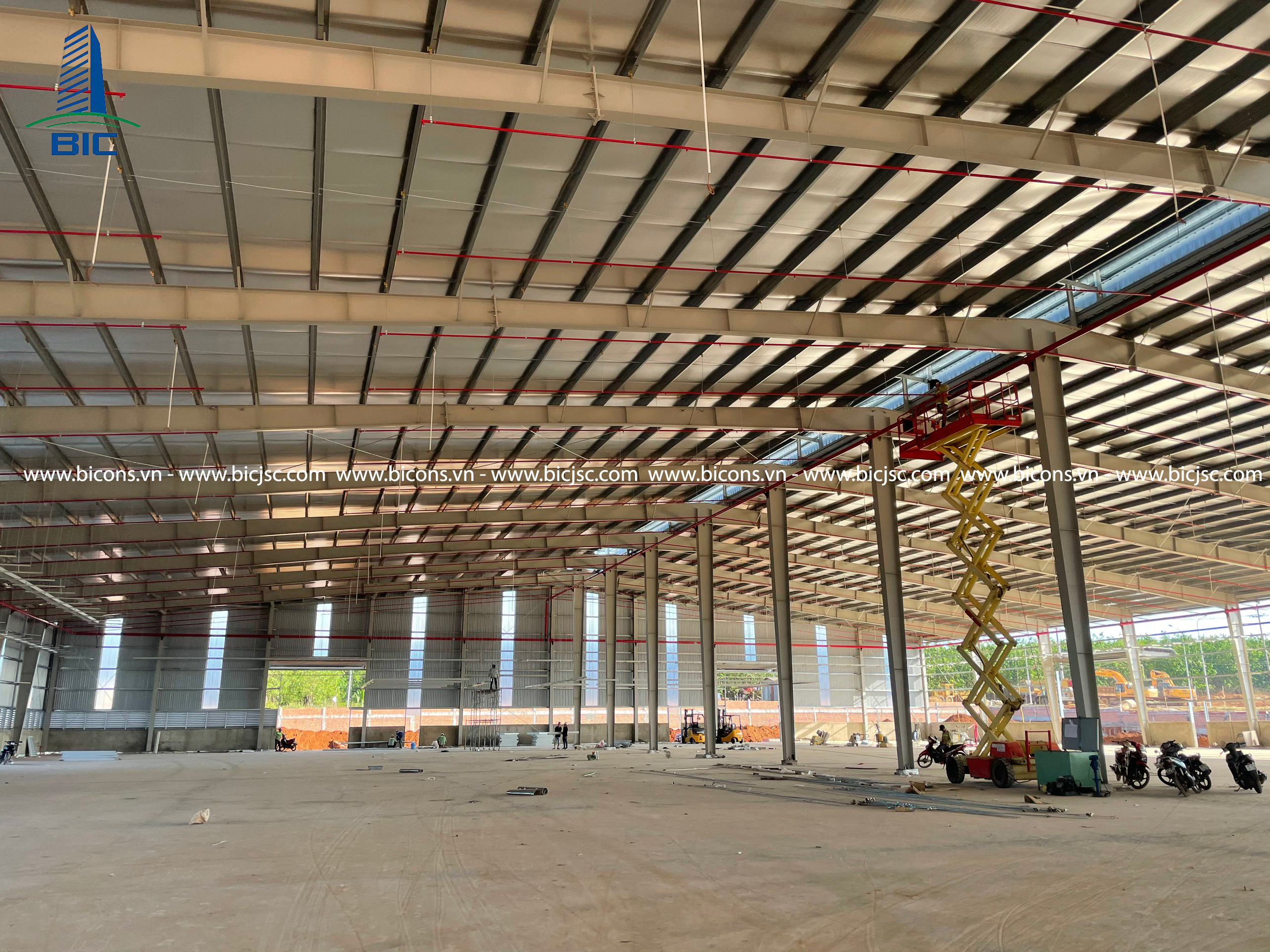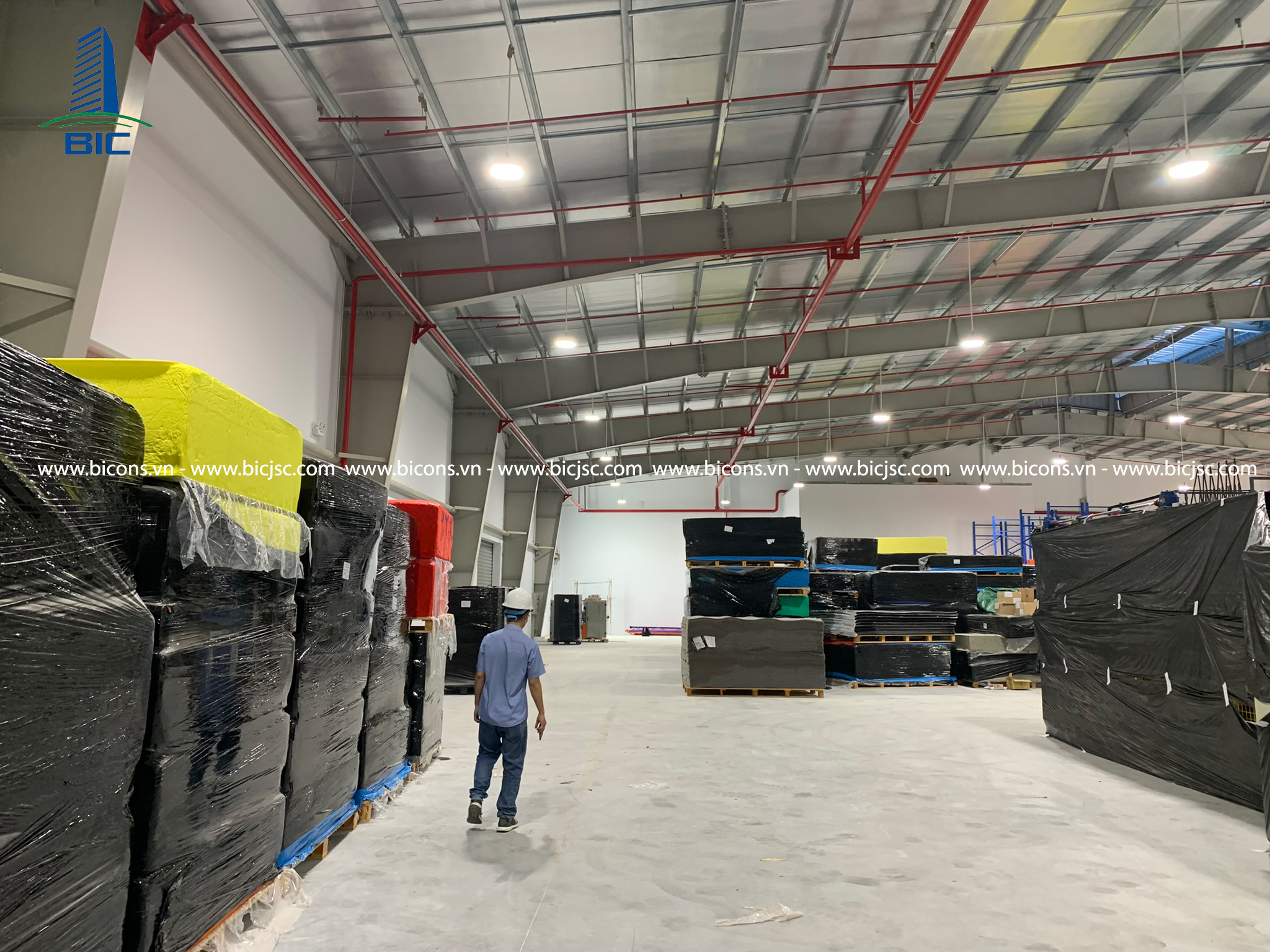
The standard steel structure maintenance process is to ensure the longevity of the factory and meet the needs of production activities. The plant should be inspected periodically. In that process, detecting damaged parts or components to promptly repair and overcome in time so that every workshop space ensures its functioning and increases its service life in the long run.
- Periodic maintenance and maintenance of electromechanical equipment such as fans, pumps, motors or production machinery...

- Maintain storm water supply and drainage systems every 3-6 months such as: block pipes, gutters, manholes, gutters...
- Check the electrical system or electric leakage. Every 3-6 months includes: phase command, capacitor, alarm cabinet, resistance...
- General inspection of the project. Periodically every 12 months with checking floor penetration, cracking of walls, walls, columns, momentum, foundation settlement columns, deflection of layer structures, electrical connections...
Industrial projects need to be checked according to the factory maintenance process in order and meet certain standards to ensure the life of the work as well as to ensure the needs of use and production needs. In order to detect and promptly overcome the structural steel structural items that need to be repaired immediately, increasing the use time as well as ensuring the working environment.

The maintenance process of the steel structure of the workshop is carried out according to the following steps:
Step 1: Survey and check to assess the quality as well as the current status of the project
Step 2: From there, there are data to plan to repair possible damage
Step 3: Next, make a periodic inspection plan
Step 4: Maintenance of factory machinery
Step 5: Periodic and unexpected repair for the project
Step 6: Prepare as well as manage records on construction maintenance.
Factory is not only an asset but also a means of production. There are many benefits to carrying out a structural steel maintenance routine. Help the factory operate in a normal way, safe for the use process. Helping manufacturers feel more secure at work. Thereby improving production, profit and work efficiency. Reduce repair costs. Increase lifespan and at the same time reduce energy consumption.